Mirror, mirror on the wall, who is the fairest of them all?
Household mirrors tell us daily who we are or believe to be! In earlier times mirrors were referred to as “looking glasses” in documents such as inventories. In fact they were a prized item for the simple reason that silvered mirror glass, particularly in the 17th and 18th centuries had to be imported from England or elsewhere in Europe. The term looking glass would have been meaningful in two distinctive ways. First, it clearly reflected the image of its beholder and did so with no bias. Second, the mirror enabled the beholder to adjust and improve their appearance as they wished to be perceived by others. In this role bias would have been the rule!
Our first mirror consists of a relatively modestly scaled rectangular silvered glass set within a boldly scalloped wooden frame with its rather ornate pediment (albeit missing a few parts).
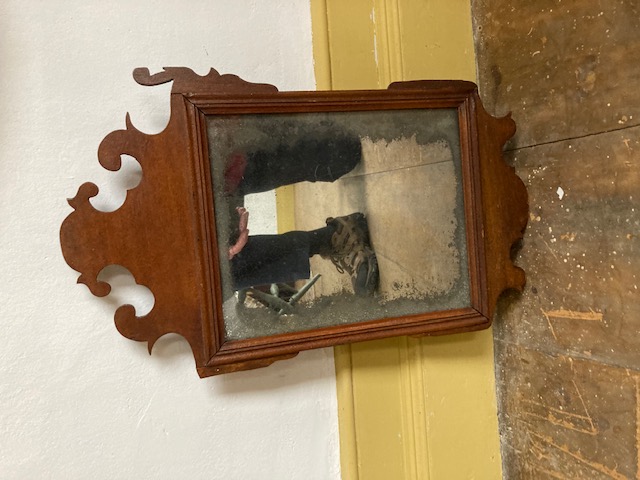
This looking glass would date from about 1750—1770 and was allegedly owned by Major Samuel Goodwin. Goodwin had a large family and doubtlessly each member would scrutinize his or her appearance on a pretty regular basis. While some such mirrors were made in the British colonies of mainland North America, the majority were either shipped complete or in part from the mother country.
Our second mirror dates considerably later, during the early years of the new republic, probably from about 1800-1815.
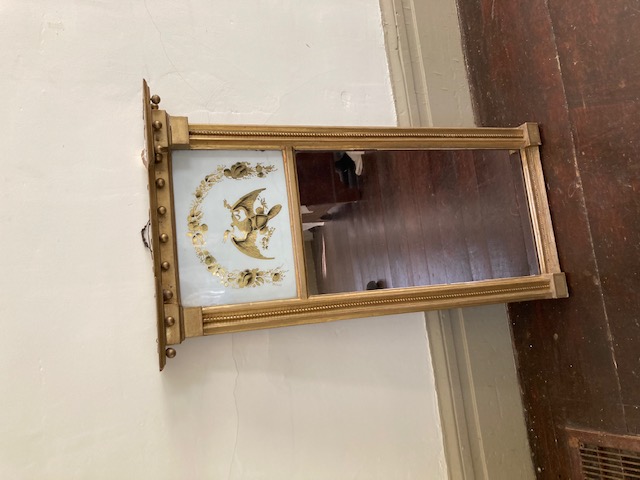
At this time such mirrors were now made in the United States, This example is an a rather severe, geometric neoclassical style. It consists of two parts—a glass reverse painted panel (termed églomisé) above and an upright rectangular sheet of mirror glass below. Together they are crowned by a bold horizontal molding supported by colonettes. The entire wood surface has been prepared in gesso and covered by gold leaf. The overall effect is elegant and costly.
Our third mirror, from the mid 19th century, is a more “plain Jane” variety consisting of a simple but substantial shaped border which consists of mahogany veneer glued onto a pine carcass. Such mirrors were made a huge numbers because a much larger population could now afford such a luxury. They were cheap at the time and are still a readily available and affordable antique.
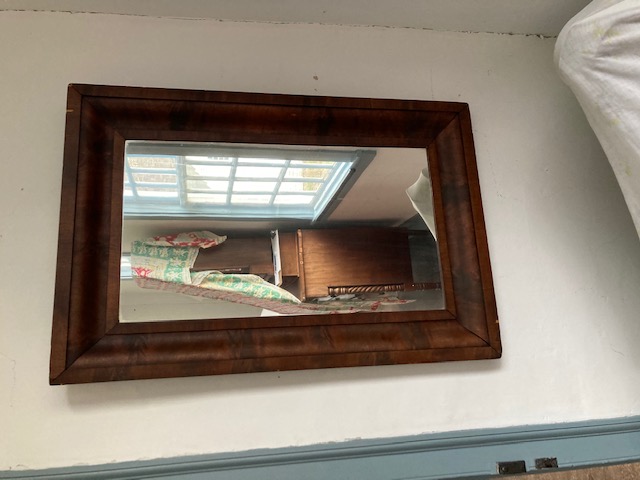
Our last mirror is a delight. By salvaging a substantial fragment of a broken mirror an amateur cabinetmaker produced a whimsical trapezoidal mirror frame intended to delight children. Although the glass has lost much of its silvering enough remains for children to preen themselves as if adults. Little did they realize that adults were also preening themselves before mirrors to project their own make-believe place in the world.
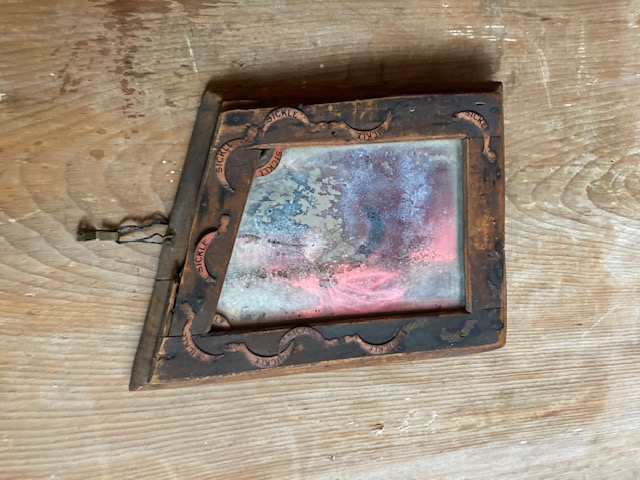
George Keyes, LCHA Collections Committee
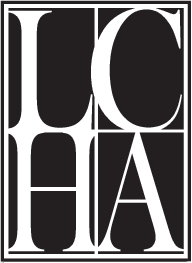
 Newsletter
Newsletter Join LCHA
Join LCHA Donate Now
Donate Now